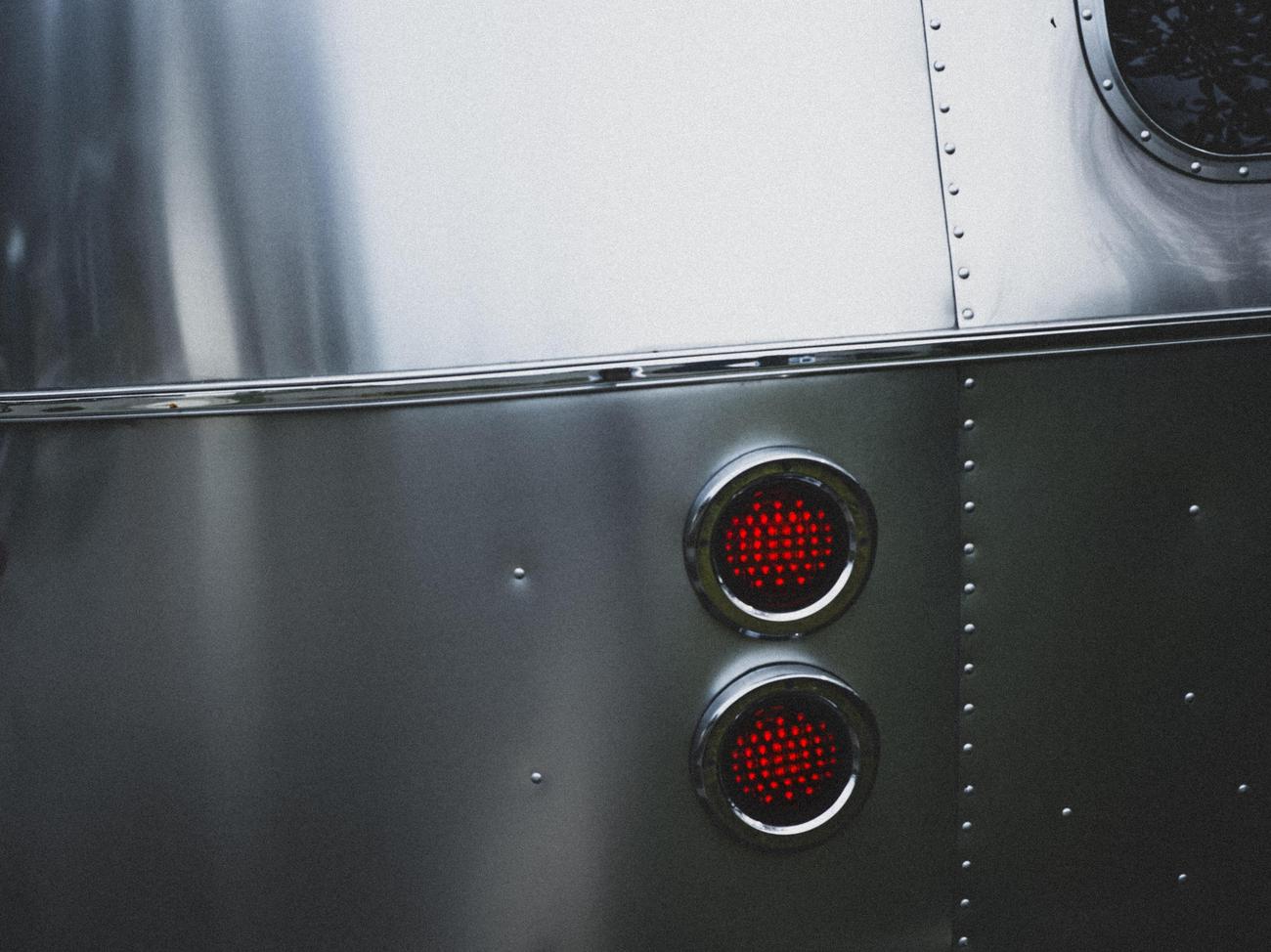Welcome to the fascinating world of aluminum foil! In this article, we are diving deep into the realm of this versatile kitchen essential to uncover some truly surprising facts. From its common uses in the kitchen to its inventive applications beyond, we will explore the ingenious ways aluminum foil can enhance our lives. So fasten your seatbelts and get ready for an exciting journey where we unveil the captivating and unexpected trivia about this humble but remarkable material.

Interesting Facts About Aluminum Foil
Aluminum foil is a staple in many households, mainly used for wrapping leftovers or covering dishes in the kitchen. But did you know that this versatile material has a fascinating world beyond its common purpose? Let’s delve into some intriguing facts about aluminum foil that will leave you amazed and appreciating its ingenious uses.
The Shiny and Dull Sides Explained
When you unroll a sheet of aluminum foil, you may have noticed that it has a shiny side and a dull side. But why? Well, the manufacturing process involves two layers of aluminum rolling together, creating one shiny side and one dull side. Additionally, some foils have a non-stick coating applied to only one side. So, next time you wrap your food, remember that the shiny side of the foil is the one with the non-stick coating.
Ever wondered why aluminum foil has a shiny and dull side? The manufacturing process results in one shiny and one dull side. Keep in mind that the shiny side is the one with the non-stick coating.
Reflectivity: The Bright and the Embossed
Aluminum foil’s reflective properties are incredibly useful in various applications. Bright aluminum foil, with its smooth surface, reflects an impressive 88% of the light that hits it. On the other hand, embossed foil, with its textured surface, reflects about 80% of the light. This reflectivity makes aluminum foil a valuable tool for insulation, radiators, and even solar panels.
Bright aluminum foil reflects a whopping 88% of light, making it ideal for insulation, radiators, and solar panels.
The Tin Foil Misnomer
Although commonly referred to as “tin foil,” it’s important to note that aluminum foil is made out of aluminum, not tin. The historical usage of tin for wrapping food may have contributed to the persistent misnomer. Tin foil was indeed popular in the early 20th century, but it was eventually replaced by aluminum foil due to its superior properties, such as being lighter, more flexible, and resistant to heat.
Aluminum foil is often mistakenly called tin foil, but it is actually made of aluminum, not tin. Its superiority in terms of flexibility and heat resistance led to its replacement of tin foil.
Aluminum’s Price Tag Through History
When aluminum was first introduced to the world in Paris in 1855, it was considered a precious metal and more expensive than gold. The rarity and difficulty in extracting aluminum made it a luxury item. However, advancements in technology and the discovery of methods for mass production eventually transformed aluminum into an affordable and widely accessible material.
In its early days, aluminum was more expensive than gold, but technological advancements made it accessible to all.
The Cost of Aluminum Production
The price of aluminum is closely tied to the cost of electricity. Production of this lightweight metal requires large amounts of electrical energy. In fact, it takes three times more electrical energy to produce one ton of aluminum than one ton of steel. This reliance on electricity costs impacts the fluctuation of aluminum prices in the market.
The cost of electricity heavily influences the price of aluminum, making it a fluctuating commodity.
The Surprising Density of Aluminum
Despite its strength and durability, aluminum is surprisingly lightweight. It is about one-third as dense as iron or copper, making it an excellent material for rolling into thin foils. This low density allows aluminum foil to be easily manipulated, folded, and shaped for various purposes, making it an incredibly versatile material in the kitchen and beyond.
Aluminum’s low density makes it easy to roll into thin foils, granting it versatility in countless applications.
From its reflective properties to its historical journey, aluminum foil has undoubtedly earned its rightful place in our kitchens and beyond. Its interesting facts and exceptional qualities make it more than just a practical tool for leftovers. So, next time you reach for a roll of aluminum foil, take a moment to appreciate its fascinating world and the countless ways it enhances our daily lives.
Aluminum foil is more than just a kitchen essential; its fascinating history and unique qualities make it an extraordinary and invaluable material.
Aluminum is a fascinating metal with countless applications and properties that make it incredibly versatile. If you’re curious to learn more, we’ve compiled five intriguing facts about aluminum. From its lightweight nature to its exceptional conductivity, exploring these facts will unveil the wonders of this remarkable material. So, without further ado, let’s dive into these five facts about aluminum.
Aluminum is the most abundant metal in the Earth’s crust, making up about 8% of the planet’s surface. This incredible prevalence ensures that aluminum is readily available for use in various industries, from construction to transportation.
Despite being incredibly lightweight, aluminum possesses impressive strength. In fact, when compared to steel, aluminum has a higher strength-to-weight ratio, making it a preferred choice for applications where weight reduction is crucial, such as aerospace engineering.
Did you know that aluminum is highly resistant to corrosion? This inherent resistance is due to the formation of a protective oxide layer on the metal’s surface. This unique property enables aluminum to withstand harsh environments and contributes to its long lifespan.
Aluminum is an excellent conductor of heat and electricity. Its high thermal conductivity makes it ideal for manufacturing heat sinks, while its electrical conductivity ensures its application in power transmission lines and electrical wiring.
Recyclability is a key characteristic of aluminum, making it an environmentally-friendly choice. With the ability to be recycled indefinitely without losing its properties, aluminum plays a vital role in reducing waste and conserving resources.
Now that you’ve glimpsed into the fascinating world of aluminum, why not delve deeper? Click here to discover more about the five facts about aluminum: 5 facts about aluminum.
Interesting facts about aluminum foil:
Aluminum foil has been an essential household item for many years, providing countless benefits to our daily lives. Did you know that using aluminum foil brings a range of advantages? From preserving the freshness of food to creating deliciously crispy roasted vegetables, the benefits of using aluminum foil are truly remarkable. Explore the numerous benefits of using aluminum foil and discover why it is an indispensable item in every kitchen. Learn more about the history and evolution of aluminum foil, which dates back to the early 20th century, when it revolutionized food storage and cooking methods. Discover the sustainable uses of aluminum foil, as it can be recycled again and again, reducing waste and promoting an eco-friendly lifestyle. Discover these fascinating aspects of aluminum foil and embark on a journey of exploration and appreciation for this versatile material. To dive deeper into the benefits of using aluminum foil, click here: benefits of using aluminum foil. For an in-depth understanding of the captivating history and evolution of aluminum foil, click here: history and evolution of aluminum foil. Lastly, to explore the sustainable uses of aluminum foil and contribute to a greener future, click here: sustainable uses of aluminum foil.
Now, let’s continue to unravel more intriguing facts about aluminum foil…
The Aluminum Foil Trick Everyone Should Know About
[youtube v=”-iUupDJ2h-g”]
-Aluminum foil is a versatile tool found in most kitchens, often used for covering leftovers, wrapping food for storage, and even baking. However, it can also serve various other purposes that you may not have considered.
Make Your Own Funnel
-If you’re in need of a funnel but don’t have one on hand, aluminum foil can come to the rescue. By creating a mold using paper or soft cardboard, you can shape the foil into any size and shape funnel you need. This DIY funnel is not only customizable but also reusable.
“Aluminum foil can be a handy tool for making your own funnel, allowing for customization and multiple uses.”
Speed Up Ironing
-Ironing clothes can be a time-consuming and tiring task, especially when you have to flip the clothes over to iron the other side. However, by using aluminum foil, you can cut your ironing time in half. Simply remove the pad from your ironing board, stretch a piece of foil across the top, and replace the cover. The foil acts as a conductor, allowing you to remove wrinkles from both sides simultaneously.
“With a simple trick using aluminum foil, you can reduce ironing time by ironing both sides of clothes simultaneously.”
Sharpen Scissors
-To ensure your scissors are cutting correctly, they need to be free of rust and regularly sharpened. Luckily, aluminum foil can help with this. By cutting the foil about seven to ten times, you can effectively clean the blades, making them look shinier and sharper.
“Aluminum foil can be used to clean, sharpen, and maintain the sharpness of scissors, prolonging their lifespan.”
Battery Extender
-Running out of double-A batteries but only having triple-A batteries on hand can be frustrating. However, with aluminum foil, you can temporarily use triple-A batteries in a double-A battery situation. By rolling a small piece of foil into a ball and placing it between the connector and the top of the battery, you can extend its power until you can purchase proper double-A batteries.
“Aluminum foil can temporarily extend the lifespan of triple-A batteries when double-A batteries are not available.”
Remove Static from Clothes
-When your clothes go in the dryer, they often experience static cling. If you don’t have dryer sheets on hand, aluminum foil can serve as an effective alternative. By creating up to three balls of foil and adding them to the dryer, you can eliminate static while your clothes are being dried.
“Aluminum foil can be used to prevent static cling in the dryer, providing an alternative to dryer sheets.”
Clean and Maintain Household Items
-Aluminum foil can be used to clean and maintain various household items. Here are some examples:
1. Clean Your Iron: To remove dirt and grime from your iron, simply sprinkle salt on a piece of foil placed on your ironing board and run the iron over it. The salt will scrape off the dirt, leaving your iron clean and ready to use.
2. Remove Tarnish from Silverware: Wrap tarnished silverware in foil and submerge it in hot water mixed with baking soda. The chemical reaction between the foil, hot water, and baking soda will remove the tarnish, leaving your silverware clean and shiny.
3. Move Furniture with Ease: To glide heavy furniture across the floor without assistance, place pieces of foil under the furniture legs. The dull side of the foil should be facing down, allowing the furniture to slide smoothly.
“Aluminum foil is a versatile tool that can be used to clean and maintain various household items, such as irons, silverware, and furniture.”
Improve Wi-Fi Signal
-Do you struggle with a weak Wi-Fi signal? Aluminum foil can help boost your Wi-Fi’s reach. Fold a piece of foil like a screen and place it behind your modem. This simple trick can enhance the signal, allowing you to enjoy a stronger connection even when you’re far away from the modem.
“Boost your Wi-Fi signal by using aluminum foil as a homemade signal booster behind your modem.”
These are just a few of the many clever uses for aluminum foil. From DIY hacks to cleaning and maintenance tricks, this household item proves to be more versatile than originally thought. Don’t underestimate the power of aluminum foil in simplifying everyday tasks and improving efficiency in various areas of your life.
To get you started, here’s a summary of the top aluminum foil tricks everyone should know about:
– Create custom funnels
– Speed up ironing time
– Clean and sharpen scissors
– Temporarily extend battery life
– Eliminate static from clothes
– Utilize foil for cleaning and maintenance tasks
– Use foil to improve Wi-Fi signal
Now it’s your turn. Do you have any other aluminum foil hacks? Share your tips and tricks in the comments below!

FAQ
Q: Is aluminum foil impermeable to water and oxygen?
A: Yes, aluminum foils thicker than 25 μm (1 mil) do not allow water and oxygen to pass through.
Q: Does aluminum foil have a shiny and a dull side?
A: Yes, aluminum foil has a shiny side and a dull side. The foil may have a non-stick coating on only one side.
Q: What is the reflectivity of aluminum foil?
A: The reflectivity of bright aluminum foil is 88%, while dull embossed foil is about 80%.
Q: Is aluminum foil made out of aluminum or tin?
A: Aluminum foil is made out of aluminum. Some people still refer to aluminum foil as tin foil, although it is no longer made from tin.
Q: How expensive was aluminum when it was introduced?
A: When aluminum was introduced to the world in Paris in 1855, it was more expensive than gold due to the difficulty of extracting it from its ores.
- Senior at What Age: Benefits & Eligibility Guide - March 29, 2025
- Unlocking Senior Benefits: How Old is a Senior? Your Complete Guide - March 29, 2025
- Master Russian Politeness:A Guide to Saying Please - March 29, 2025
















